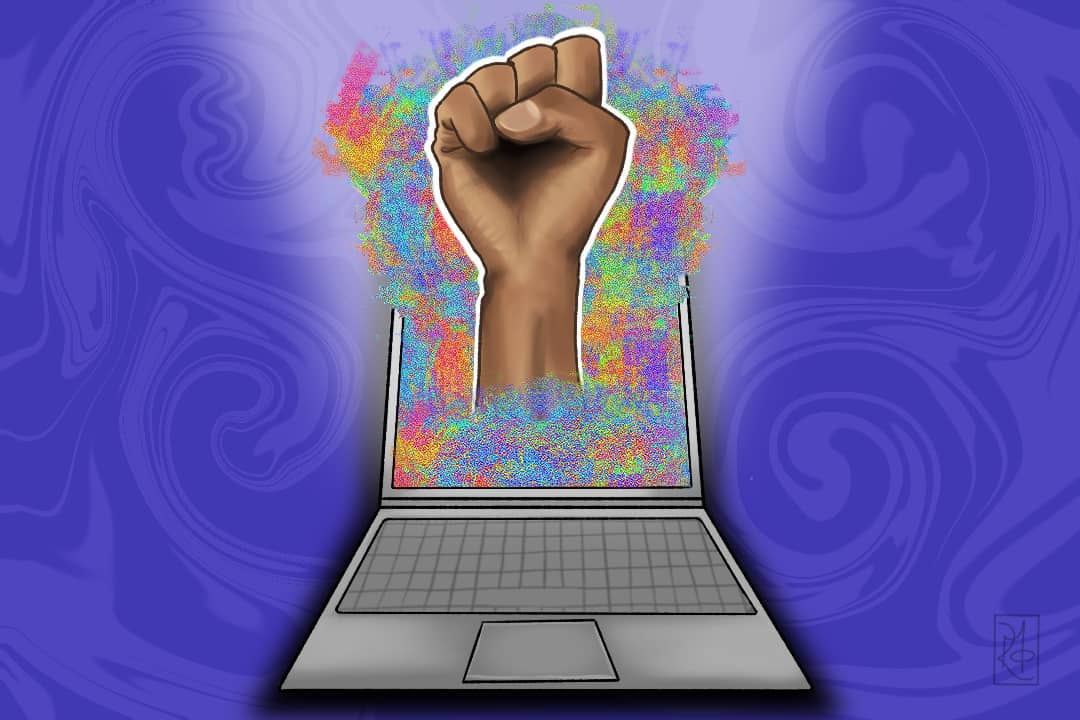As many of us have been strapped to our devices during lockdown, we have become more anxious about news, clinging to every byte the media broadcasts. This constant need to be connected with the rest of society has opened the flood-gates and exposed us to abhorrent injustices that have historically gone overlooked, such as racism, misogyny, and imperialism.
As such, we have become disillusioned by our political systems, and in turn, have become motivated to change our institutions — the only caveat is that we cannot rally together in person. Instead, we have to adapt to a new form of activism in the age of COVID-19.
Simply by nature, online activism is a lot more intangible than in-person protests as it relies on people to act in response to campaigns through petitions or donations. While these are important measures to boost civic engagement, they are relatively small steps toward making change as they depend on the actions of individuals, not the masses.
To challenge the integrity of our institutions we need to work as a collective. This means that online activism needs to coordinate the actions of individuals to have the same effects as mass gatherings.
As a result of COVID-19, movement organizers have become attuned to the challenges posed by online activism and have opted for a more subversive approach to accommodate this. To provide more context, Western activists have traditionally fought for change by cutting off the proverbial supply chain and leading by example.
The Montgomery Bus Boycott is a prime example of people choosing to forgo public transportation in solidarity. Through their boycott, protestors demonstrated what a more inclusive society would look like, despite not having the support of the government.
Yet, activists in lockdown have done the very opposite by using guerilla tactics to hijack political campaigns. Take, for example, Trump’s re-election campaign. In an effort to boost support, his campaign provided free rally tickets and campaign signs to supporters.
Despite being vehemently against his platform, many online activists posted on TikTok about how they registered themselves for tickets to prevent his real followers from attending the event. In essence, people were “filling up the bus” online so that Trump supporters could not get to their destination.
Similarly, the Black Lives Matter movement has occupied digital spaces to instill the message that racism is inescapable for racialized people. On June 2, over 28 million Instagram users participated in #BlackoutTuesday to protest against police brutality. Despite being on a medium that glamorizes reality, this campaign proved that we must confront systemic failings and refuse to ignore them.
Although #BlackoutTuesday was a successful campaign, there were several drawbacks that discredited the movement.
For starters, many of the blackout posts also included the hashtag “BlackLivesMatter,” effectively drowning out those who were trying to use the hashtag for the movement itself. As a result, the campaign counterintuitively silenced the voices of protestors — those who the campaign was trying to uplift — and created divisiveness.
By extension, such acts breed a form of ‘trend activism’ in which people speak up against injustices only when it is convenient to do so. Oftentimes, this does not amount to more than a repost on social media to prove one’s ‘wokeness.’ For those who have dedicated time and energy to causes that they are passionate about, this can be incredibly unnerving.
This has unnecessarily cleaved a wedge between people who are fighting for the same cause. In order to make progress, activism has to become more inclusive and meet people where they’re at, because rejecting support would be more debilitating to the movement in the long run.
Rather, the online community should allow for people to ease into civic engagement as they become more educated. Although this is not ideal, we have to adapt to the new normal if we want to create change.
Yana Sadeghi is a second-year international relations and peace, conflict, and justice student at New College.


